- Recharge Underground Water Reservoir
Water is Life
Reuse - Recycle - Recharge - Reduce
जल प्रबंधन को ध्यान देने की आवश्यकता है: सामान्य नागरिक से लेकर प्रशासन तक। With rising population and uncertainties in weather patterns, water management needs a critical attention from everybody: ordinary citizen to the government. We all need to do our bit to address this concern and make the water available to all. One can get the monthly rainfall data for each state from 1901 to 2017 at data.gov.in/catalog/rainfall-india
Can we imagine the side effects of poor management of rainwater? It leads to destruction of road, inconvenience to travellers besides loss of invaluable life-saving and life-giving water!
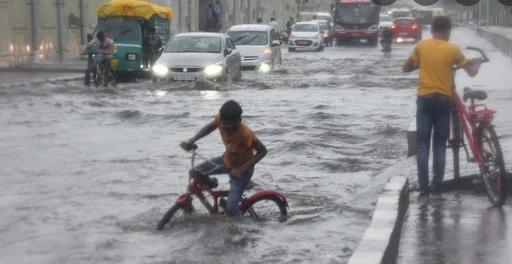
शहरी घरों में पानी बर्बाद होने के तरीकों में से एक: हम सभी डिस्चार्ज पानी को एक छोटे टैंक में स्टोर कर सकते हैं और इसका इस्तेमाल बर्तन साफ करने और कच्ची सब्जियों की सफाई करने के लिए भी कर सकते हैं। One of the way water is wasted in urban households is through discharge from RO-based water purifiers. We all can store the discharge water in a small tank and use it for cleaning utensils and even pre-cleaning of raw vegetables.
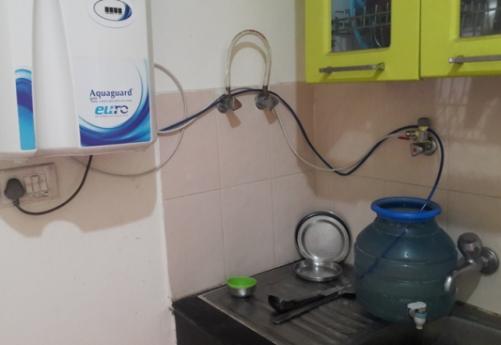
Be aware that the water discharged by the RO-system will certainly be purer than that in overhead tank. The water collection might cause some inconvenience but it is worth its value to save our planet! In most of Indian household, we have separate buckets which is used to store water and clean the floors. The buckets can be used to store the water discharged from the RO system. Some other methods: install water aerators to all taps or faucet (search for product Bubble Tap Aerator or Water Faucet Aerator Splash Proof Filter Anti-Splash).
References from Web
Refer this page for similar information about a Rain Water Harvesting (RWH) system. comprehensive guide on the rainwater collection system.
Change in design on new houses to accomodate for Rainwater Harvesting
There should separate waterlines and overhead tanks for kitchen/baths and toilet flushes. A provision for separate storage and supply of water for toilet flush shall enable the use of 100% recycled water for this purpose. रसोईघर/स्नानघर और टॉयलेट फ्लश के लिए अलग पानी की नली और छत के ऊपर टैंक होना चाहिए। टॉयलेट फ्लश के लिए अलग भंडारण और पानी की आपूर्ति का प्रावधान इस उद्देश्य के लिए 100% पुनर्नवीनीकृत पानी के उपयोग को सक्षम करेगा।वर्षा जल संचयन शब्दावली - Jargons / Nomenclature in Rainwater Harvesting
Area of Roof - छत का क्षेत्रफल: यह जमीन पर परियोजना क्षेत्र (लंबाई x चौड़ाई) को संदर्भित करता है और वास्तविक सतह के क्षेत्रफल को नहीं। - This refers to the project area (length x width) on the ground and not the actual surface area.
औसत वार्षिक वर्षा या वर्षा राशि (वर्षा की दर) - Mean Annual Rainfall or Precipitation Amount (Rate of Rainfall): यह प्रति यूनिट अनुमानित क्षेत्र में औसत बारिश है। - This is the average rain per unit projected area.
Run-off Factor or Run-off Coefficient:आमतौर पर यह उम्मीद की जाती है कि छतों पर गिरने वाले वर्षा जल का 100% एकत्र नहीं किया जा सकता है। - It is generally expected that 100% of rainwater falling on roofs cannot be collected. यह ड्रेन पाइप सिस्टम या बरसाती में अपरिहार्य छोटे रिसावों के कारण होता है - This is due to unavoidable small leakages in the gutter downpipe system or rainfalls which are too light to produce sufficient runoff or यह अत्यधिक बारिश के समय में अतिप्रवाह के कारण है - possible overflow in the case of an extreme downpour. For this reason, it is assumed that only 80~90% of the rainwater can be collected and referred as Run-Off Factor.
जलग्रह - Catchment: The catchment of a water harvesting system is the surface which directly receives the rainfall and provides water to the system. It can be a paved area like a terrace or courtyard of a building or open areas like a lawn or ground. जलग्रहण क्षेत्र वर्षा के संपर्क का पहला बिंदु है। टैंक-आधारित वर्षा जल संचयन प्रणाली के विशाल बहुमत के लिए, जलग्रहण क्षेत्र छत की सतह है। - The catchment area is the first point of contact for rainfall. For the vast majority of tank-based rainwater harvesting systems, the catchment area is the roof surface.
जलाशय - Reservoir: The final storage of rainwater for long-term use!
टंकी - Cistern: The local or temporary storage of water!
संग्रह गटर - Collection Gutter: पाइप की प्रणाली जो छत से गिरने वाले पानी को सिस्टर्न में स्थानांतरित करने के लिए उपयोग की जाती है। - The system of pipes and bends to transfer water falling from roof to the Cistern.
छत की ऊँचाई - Height of Roof: यह निस्पंदन से पहले छत के सबसे निचले बिंदु और पानी के भंडारण टैंक के बीच की ऊर्ध्वाधर दूरी है। - It is the vertical distance between the lowest point of the roof and the water storage tank before filtration.
Coarse mesh - मोटा /खुरदरा जाली: Installed at the roof to prevent the passage of debris.
Filter - छन्नी: A filter is used to remove suspended pollutants such as debris and dirt (silt and clay) from rainwater collected over roof. A filter unit is a chamber filled with filtering media such as fibre, coarse sand and gravel layers clean water before it enters the storage tank or recharge structure. Charcoal is added for additional filtration.
Reference: wgbis.ces.iisc.ernet.in
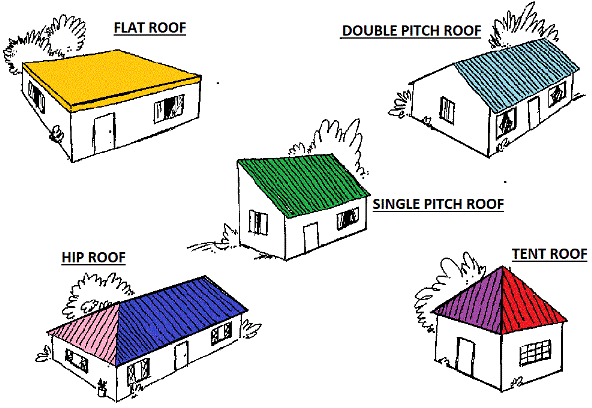
जलाशय का आयतन - Volume of Reservoir
नीचे दी गई तालिका जलाशय की व्यास और ऊंचाई को जलाशय की क्षमता को पूरा करने के लिए एक संदर्भ देती है। निर्माण की ऊँचाई को सामान्यतः नाममात्र व्यास से 10 ~ 20% अधिक माना जाता है। - The table below gives a ready reference to chose a diameter and height of the reservoir to meet a capacity (in liters) of the reservoir. Construction height is normally assumed 10~20% higher than the nomial diameter.
| व्यास - Diameter | भरने की ऊँचाई - Nominal Filling Height [m] | ||||||||
| [cm] | [in] | [ft] | 1.00 | 1.25 | 1.50 | 1.75 | 2.00 | 2.25 | 2.50 |
| Volume of Tank in Liters | |||||||||
| 100 | 39.4 | 3.28 | 785 | 982 | 1,178 | 1,374 | 1,571 | 1,767 | 1,963 |
| 125 | 49.2 | 4.10 | 1,227 | 1,534 | 1,841 | 2,148 | 2,454 | 2,761 | 3,068 |
| 150 | 59.1 | 4.92 | 1,767 | 2,209 | 2,651 | 3,093 | 3,534 | 3,976 | 4,418 |
| 175 | 68.9 | 5.74 | 2,405 | 3,007 | 3,608 | 4,209 | 4,811 | 5,412 | 6,013 |
| 200 | 78.7 | 6.56 | 3,142 | 3,927 | 4,712 | 5,498 | 6,283 | 7,069 | 7,854 |
| 225 | 88.6 | 7.38 | 3,976 | 4,970 | 5,964 | 6,958 | 7,952 | 8,946 | 9,940 |
| 250 | 98.4 | 8.20 | 4,909 | 6,136 | 7,363 | 8,590 | 9,817 | 11,045 | 12,272 |
| 275 | 108.3 | 9.02 | 5,940 | 7,424 | 8,909 | 10,394 | 11,879 | 13,364 | 14,849 |
| 300 | 118.1 | 9.84 | 7,069 | 8,836 | 10,603 | 12,370 | 14,137 | 15,904 | 17,671 |
| 325 | 128.0 | 10.66 | 8,296 | 10,370 | 12,444 | 14,518 | 16,592 | 18,665 | 20,739 |
| 350 | 137.8 | 11.48 | 9,621 | 12,026 | 14,432 | 16,837 | 19,242 | 21,648 | 24,053 |
| 375 | 147.6 | 12.30 | 11,045 | 13,806 | 16,567 | 19,328 | 22,089 | 24,850 | 27,612 |
| 400 | 157.5 | 13.12 | 12,566 | 15,708 | 18,850 | 21,991 | 25,133 | 28,274 | 31,416 |
| 425 | 167.3 | 13.94 | 14,186 | 17,733 | 21,279 | 24,826 | 28,373 | 31,919 | 35,466 |
| 450 | 177.2 | 14.76 | 15,904 | 19,880 | 23,856 | 27,833 | 31,809 | 35,785 | 39,761 |
| 475 | 187.0 | 15.58 | 17,721 | 22,151 | 26,581 | 31,011 | 35,441 | 39,871 | 44,301 |
| 500 | 196.9 | 16.40 | 19,635 | 24,544 | 29,452 | 34,361 | 39,270 | 44,179 | 49,087 |
वर्षा जल संचयन के तरीके - Rainwater Harvesting Methods: Schematic
Some of the rainwater harvesting techniques described in the book Making Water Everybody's Business by Centre of Science and Environment are shown below.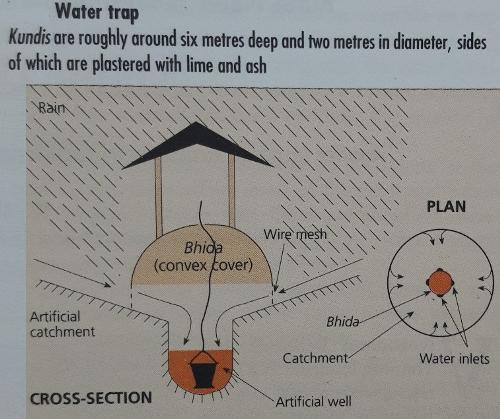
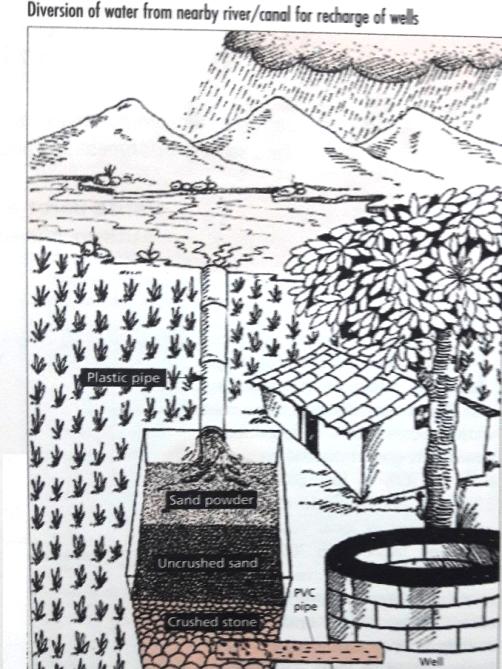
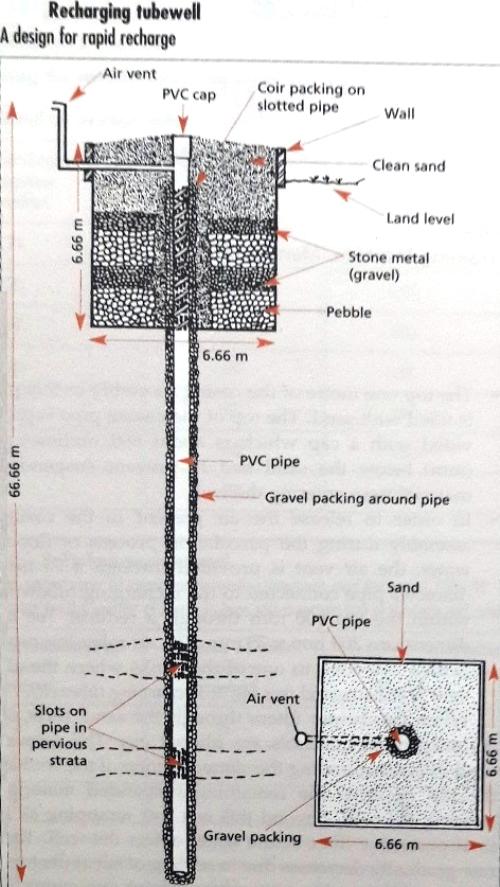
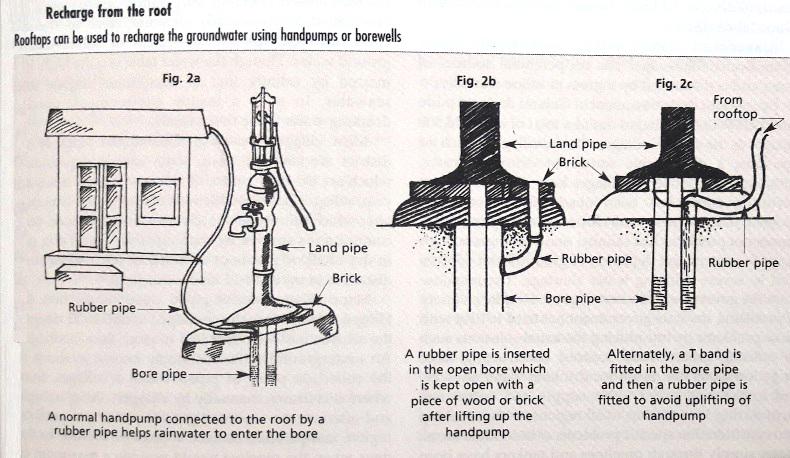
Bill-of-Material: Rain-water Harvesting System
There are many types of rainwater harvesting (RWH) systems: such as Roof Top Rain Water Harvesting (RTRWH) system, Ground Tank Rain Water Harvesting (GTRWH) system. Following table summarizes the items (commonly known as Bill-of-Material or BOM) for construction and commissioning of a typical rainwater system. Rainwater harvesting methods are site specific and hence it is difficult to give a generalised cost. As mentioned on webpage "rainwaterharvesting.org/urban/costs.htm" -the residents of Panchsheel Park Colony in Delhi pooled in Rs 4.5 lakh to harvest approx 170 million litres of water annually. Thus, the unit for cost of RWH can be [INR/kilo-Liter/p.a.] which turned out to be INR 3.75 per kilo-liter per annum.
Sample Bill-on-Material: Validation under process.
| S. No. | Description of the Item | UOM: Unit of Measurement | Quantity Required | Rate [INR/UOM] | Item Cost | Remark |
| 01 | Plastic Tank: 500 L | Pieces | 4 | 1,200/- | 4,800/- | 4 tanks to store water |
| 02 | Plastic Pipes: 4" diameter | meters | 75 | 130/- | 9,750/- | Conduits to collect water from roof to tank |
| 03 | Bricks | Thousands | 2 | 5000/- | 10,000/- | Filtration Tank |
| 04 | Cement | Bags | 10 | 500/- | 5,000/- | Filtration Tank |
| 05 | Sand | ft3 | 500 | 10/- | 5,000/- | Filtration Tank |
| 06 | Sand | ft3 | 200 | 20/- | 4,000/- | Water filtration layer - 1 |
| 07 | Plastic net | m2 | 10 | 50/- | 500/- | Water filtration layer - 2 |
| 08 | Plastic U-Bend | Pieces | 10 | 50/- | 500/- | For water collection system |
| 09 | PVC Pipe Bend | Pieces | 10 | 50/- | 500/- | For water collection system |
| 10 | Manpower | INR/day | 30 | 500 | 15,000/- | Manpower |
| Total | * | * | * | * | * | Cost |
The costs of a RWH system would be comparatively significantly less if the system is incorporated during the construction of the building itself.
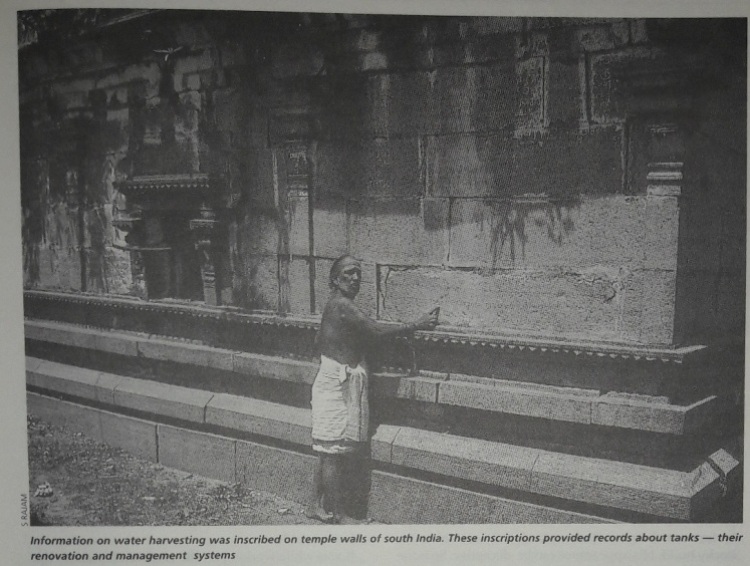
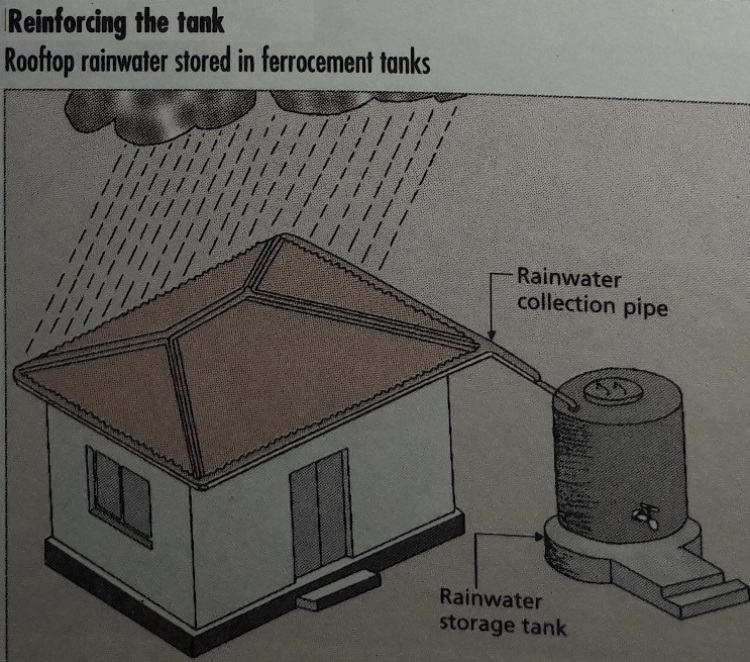
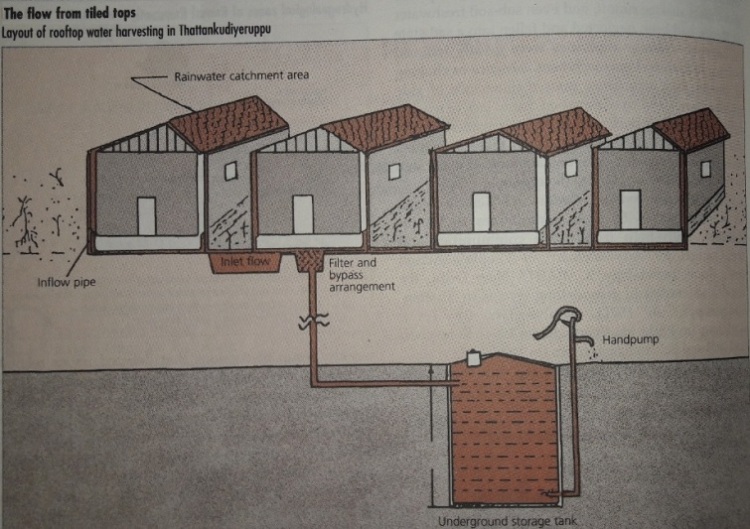
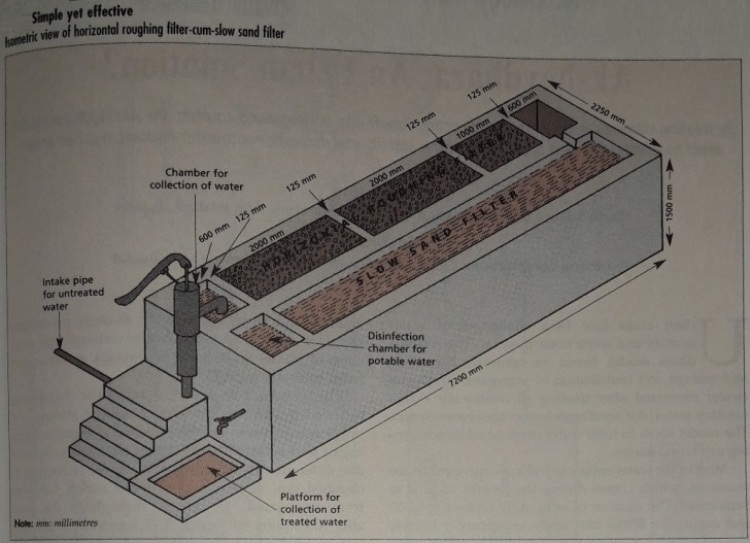

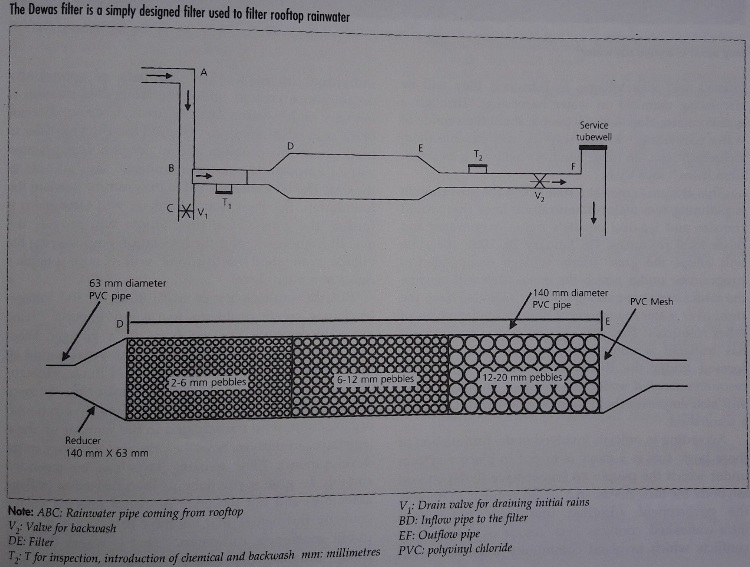
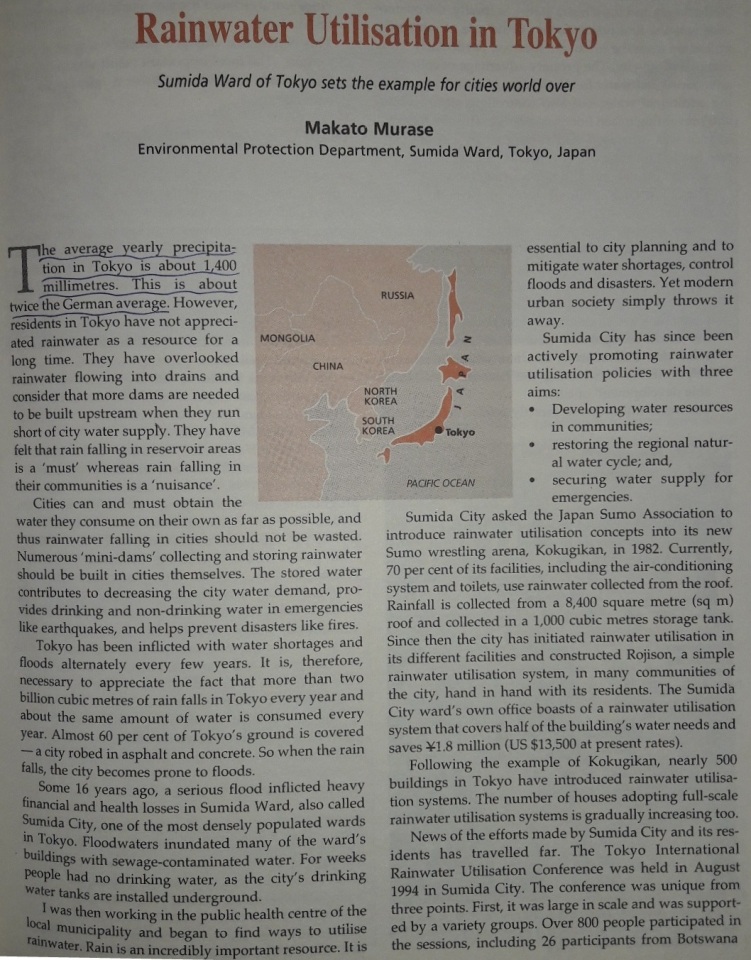

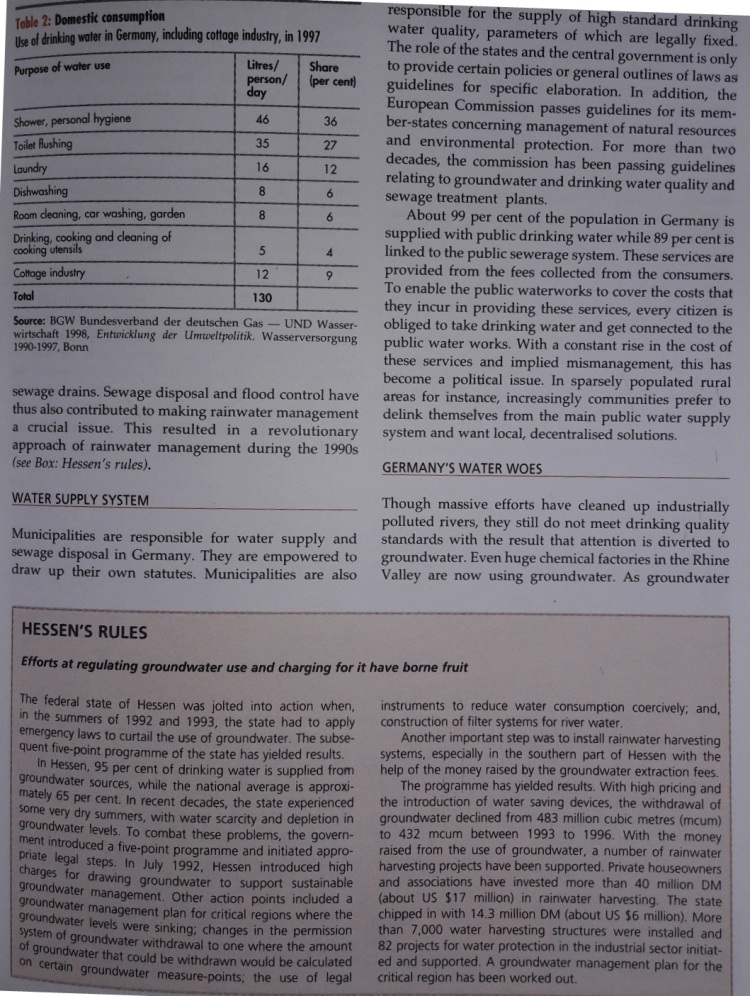
Article on Rain Water Harvesting generated by Artificial Inteliigence tool - presented here as generated
Rainwater Harvesting System and Water Saving Activities in Every Household
Rain water harvesting systems and water-saving activities have become increasingly important as the world grapples with water scarcity. With the global population on the rise and climate change affecting rainfall patterns, it is crucial for households to take proactive measures to conserve water. Rain water harvesting systems and various water-saving activities provide practical solutions to mitigate the challenges posed by water scarcity.
Rain water harvesting systems involve the collection and storage of rainwater for later use. It is a sustainable and eco-friendly method that can be easily implemented in households. The process typically entails the installation of gutters and downpipes to channel rainwater into storage tanks or reservoirs. This collected water can then be used for various domestic purposes such as gardening, laundry, and even for drinking, after proper treatment.
Implementing rain water harvesting systems in households brings numerous benefits. Firstly, it promotes self-sufficiency by reducing dependence on municipal water sources, especially during dry seasons or droughts. By utilizing rainwater, households can alleviate the pressure on existing water supplies and contribute to water conservation efforts in their communities.
Moreover, rainwater is softer and less mineralized than tap water, making it ideal for irrigation purposes. With a rain water harvesting system, households can efficiently water their gardens and maintain lush vegetation without relying on treated tap water, which often carries additional costs due to water bills. Rainwater can also be used for washing cars and cleaning outdoor areas, reducing water wastage.
In addition to rain water harvesting systems, adopting water-saving activities at home can further contribute to water conservation. Small changes in daily routines can have a significant impact in conserving water resources. For instance, limiting shower time, fixing leaky faucets, and using water-efficient appliances can drastically reduce water consumption in households.
Another effective water-saving activity is the installation of low-flow water fixtures such as faucets, showerheads, and toilets. These fixtures are designed to use less water without compromising functionality. By replacing old and inefficient water fixtures, households can save considerable amounts of water in the long run.
Awareness and education play a crucial role in encouraging the adoption of rain water harvesting systems and water-saving activities in households. Governments, non-profit organizations, and local communities should conduct campaigns and workshops to educate people about the importance of water conservation and the practical steps they can take to contribute.
Furthermore, governments can incentivize the installation of rain water harvesting systems through tax breaks or subsidies. This can encourage more households to invest in these systems and actively participate in water conservation efforts.
In conclusion, rain water harvesting systems and water-saving activities are indispensable in addressing water scarcity and ensuring sustainable water management. By implementing these measures, households can reduce their water footprint, contribute to community-level water conservation, and foster a more environmentally conscious society. Ultimately, it is the collective responsibility of individuals, communities, and governments to prioritize water conservation and safeguard this vital resource for future generations.
Rainwater Harvesting System and Water Saving Activities in Every Household
Water is undoubtedly one of our most precious resources. It sustains life, nourishes crops, and allows for the proper functioning of various human activities. However, with the ever-increasing population and the effects of climate change, the scarcity of water has become a pressing issue worldwide. In order to tackle this challenge, it is crucial for every household to adopt rainwater harvesting systems and engage in water-saving activities. By doing so, we not only contribute to the preservation of water supplies but also actively participate in sustainable living practices that benefit the planet.
Rainwater harvesting refers to collecting and storing rainwater for future use. This method has been practiced for centuries and is now gaining immense popularity in both rural and urban areas. The primary goal of rainwater harvesting is to capture rainwater runoff from rooftops, landscape areas, and other surfaces, thereby reducing the reliance on traditional water sources. Rainwater can be easily collected by using gutters, downspouts, and storage tanks connected to the household's plumbing system.
One of the significant advantages of rainwater harvesting is that it provides an alternative source of water for non-potable uses. This includes activities such as watering plants, washing cars, and flushing toilets. By utilizing rainwater for these purposes, households reduce their consumption of treated and expensive municipal water, leading to substantial cost savings over time. Moreover, rainwater is often free from pollutants and chemicals commonly found in tap water, making it ideal for various domestic applications.
To ensure the effectiveness of rainwater harvesting systems, it is essential to implement water-saving activities in every household. These activities involve adopting simple yet impactful measures to conserve water in our daily lives. For instance, turning off faucets while brushing teeth or shaving can save up to 4 gallons of water per minute. Similarly, fixing leaky pipes and taps promptly can prevent unnecessary water wastage. Installing low-flow showerheads and faucets can also significantly reduce water consumption without compromising functionality.
Efficient water usage in household chores is another effective way to save water. Utilizing washing machines and dishwashers with full loads, rather than running them half-empty, conserves a considerable amount of water. Additionally, reusing water from activities such as washing fruits and vegetables or capturing water used for cleaning can further reduce overall consumption. This recycled water can be utilized for irrigating plants or flushing toilets, thereby minimizing the demand for fresh water.
Incorporating sustainable landscaping practices is also crucial in water conservation efforts. Planting native and drought-resistant plants, using mulch to retain moisture, and installing efficient irrigation systems can significantly reduce outdoor water usage. These practices not only conserve water but also contribute to the preservation of local ecosystems and biodiversity.
Furthermore, educating every household member about the importance of water conservation and involving them in implementing water-saving measures is essential. By instilling these habits from a young age, we can contribute to a culture of sustainability in every household and create a collective impact in safeguarding our water resources for future generations.
In conclusion, rainwater harvesting systems and water-saving activities are vital components of sustainable living. Every household must actively engage in rainwater collection and utilize it for non-potable purposes. By adopting water-saving practices in our daily routines and incorporating efficient water usage in household chores and landscaping, we can make a significant difference in conserving water. This collective effort, alongside educational initiatives, will pave the way for a more sustainable future, where every drop of water counts.
The content on CFDyna.com is being constantly refined and improvised with on-the-job experience, testing, and training. Examples might be simplified to improve insight into the physics and basic understanding. Linked pages, articles, references, and examples are constantly reviewed to reduce errors, but we cannot warrant full correctness of all content.
Template by OS Templates